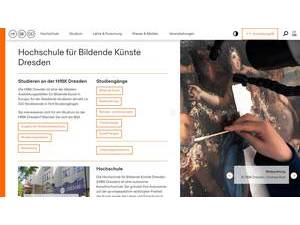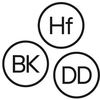
University Overview
Founded in 1764, Hochschule für Bildende Künste Dresden (Dresden University of Fine Arts) is a non-profit public higher education institution located in the urban setting of the large city of Dresden (population range of 500,000-1,000,000 inhabitants), Saxony. Officially recognized by the Sächsisches Staatsministerium für Wissenschaft, Kultur und Tourismus (Saxon State Ministry for Science, Culture and Tourism), Hochschule für Bildende Künste Dresden (HfBK Dresden) is a very small-sized (uniRank enrollment range: 500-999 students) coeducational German higher education institution. Hochschule für Bildende Künste Dresden (HfBK Dresden) offers courses and programs leading to officially recognized higher education degrees in several areas of study. See the uniRank degree levels and areas of study table below for further details. This 261-year-old German higher-education institution has a selective admission policy based on entrance examinations. The acceptance rate range is 10-19% making this German higher education organization an extremely selective institution. International students are welcome to apply for enrollment. HfBK Dresden also provides several academic and non-academic facilities and services to students including a library, study abroad and exchange programs, as well as administrative services.
University Snapshot
Control
![]() public
public
Entity
![]() non-profit
non-profit
Size
![]() very small-sized
very small-sized
Selectivity
![]() extremely selective
extremely selective
University Identity
| Name | Hochschule für Bildende Künste Dresden |
|---|---|
| Name (English) | Dresden University of Fine Arts |
| Name (Non Latin) | n.a. |
| Acronym | HfBK Dresden |
| Founded | 1764 |
| Motto | |
| Colours | |
| Mascot | |
| Screenshot |  |
| Video Presentation |
University Location
| Address | Güntzstrasse 34 Dresden 01307 Saxony Germany |
|---|---|
| Location Map and Satellite View | |
| (351) 4402 - 0 / - 2102 | |
| (351) 4402 – 2250 | |
| Other locations |





Social Media
Official Social Media Channels
Hochschule für Bildende Künste Dresden's Facebook page review
Hochschule für Bildende Künste Dresden's X page review
Hochschule für Bildende Künste Dresden's Youtube page review
Hochschule für Bildende Künste Dresden's Instagram page review
Hochschule für Bildende Künste Dresden's official LinkedIn profile
n.a.
Related Guide Articles
Social media can be a powerful tool for Universities to communicate with current students, alumni, faculty, staff and the wider community. But how can social media be important for prospective students? Read our article about the importance of Social Media for universities and prospective students to learn more.